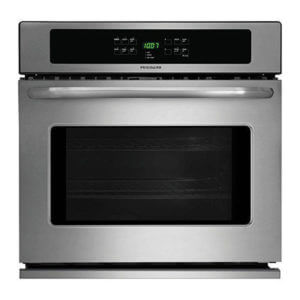- /
- /
- /
Household and Commercial Appliance
Household appliance is an electrical/mechanical machine, which accomplish some household functions, such as cooking or cleaning. Household appliances shall be tested and certified for compliance with safety standards.
Commercial appliance is simply the commercial, or industrial, version of a household appliance. It is designed to be used nearly continuously in a restaurant or other similar setting. Commercial appliances are typically connected to a more powerful electrical outlet, are larger and stronger, have more user-serviceable parts, and cost significantly more.
Such appliances can be classified into three main categories:
- Major Appliances, i.e. large machines used for routine housekeeping tasks such as cooking, washing laundry, or food preservation. Examples include oven and refrigerator.
- Small appliances, i.e. portable or semi-portable machines, generally used on table-tops, counter-tops, or other platforms, to accomplish a household task. Examples include microwave ovens, toasters, humidifiers, and coffee makers.
To make such products safe it requires an understanding of the hazard that can occur in each product. Certain potential hazards are presented in all electrical and gas products; these are due the way the products are powered and perform their intended functions.
There are three fundamental hazards to be evaluated as part of any safety evaluations:
- Electrical shock hazard
- Mechanical injury hazard
- Fire hazard
All household and commercial appliances might represent entire or partial set of fundamental hazards. Every safety standard addresses these hazards by containing specification for each of them.
It is important to use materials and components that are designed for the desired functions, i.e. wiring material of a proper gauge, electrical components with proper electrical and mechanical rating and conditions of acceptability, material with thermal/chemical/dielectric properties, etc.
The main challenge in designing/building appliances is to select right components and to assemble them into a product that will not represent fundamental hazards under intended use. Manufacturers need to know and understand the safety standards that are applicable to their product.
Some of the standards addressing safety requirements for household and commercial appliances are as following:
- UL 197/CSA-C22.2 No. 109 (Standard for Commercial Electric Cooking Appliances)
- UL 507/CSA-C22.2 No. 113 (Standard for Electric Fans)
- UL 73/CAN/CSA-C22.2 No. 68 (Standard for Motor-Operated Appliances)
- ANSI Z83.11 (Gas food service equipment)
- IEC/EN 60335-1 (Safety of Household and Similar Appliances, Part 1: General Requirements)
Part 2 standards of60335 series exist for specific products and to be used in conjunction with Part 1, example include: - IEC/EN 60335-2-79 (Particular requirements for high pressure cleaners and steam cleaners)



